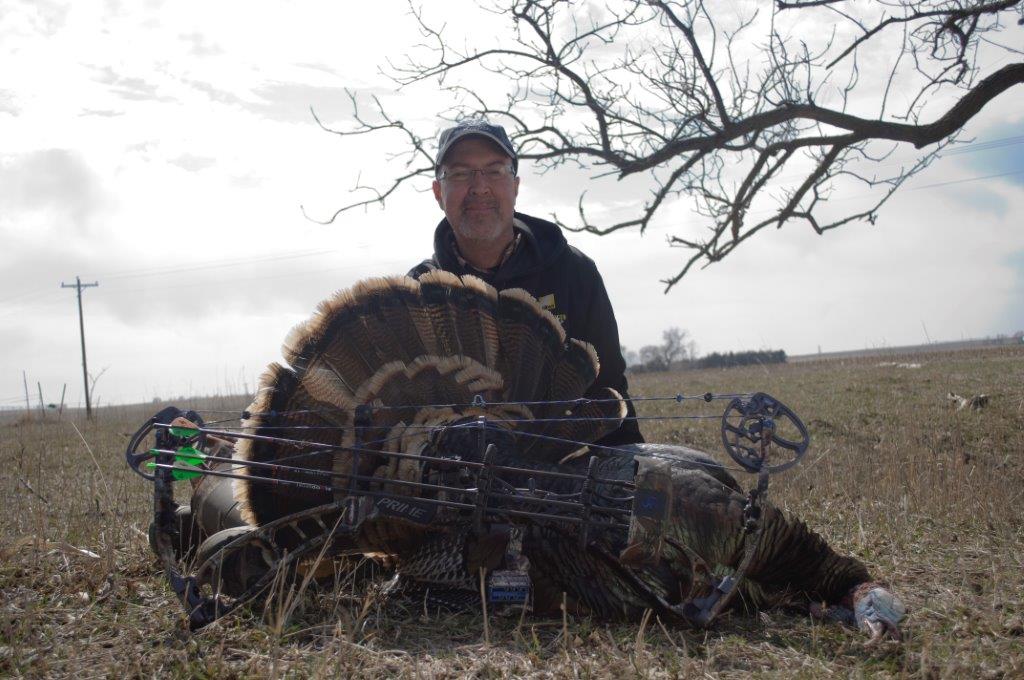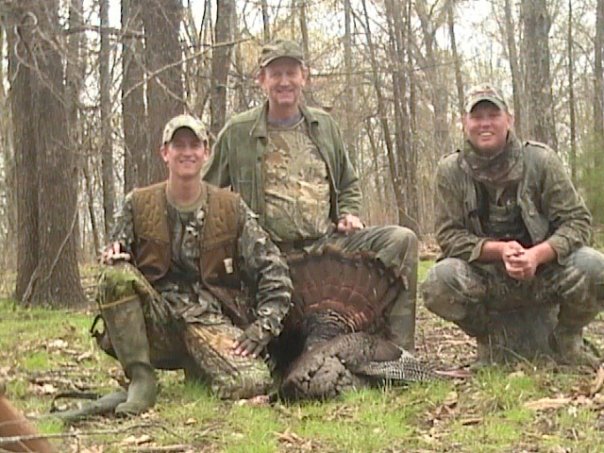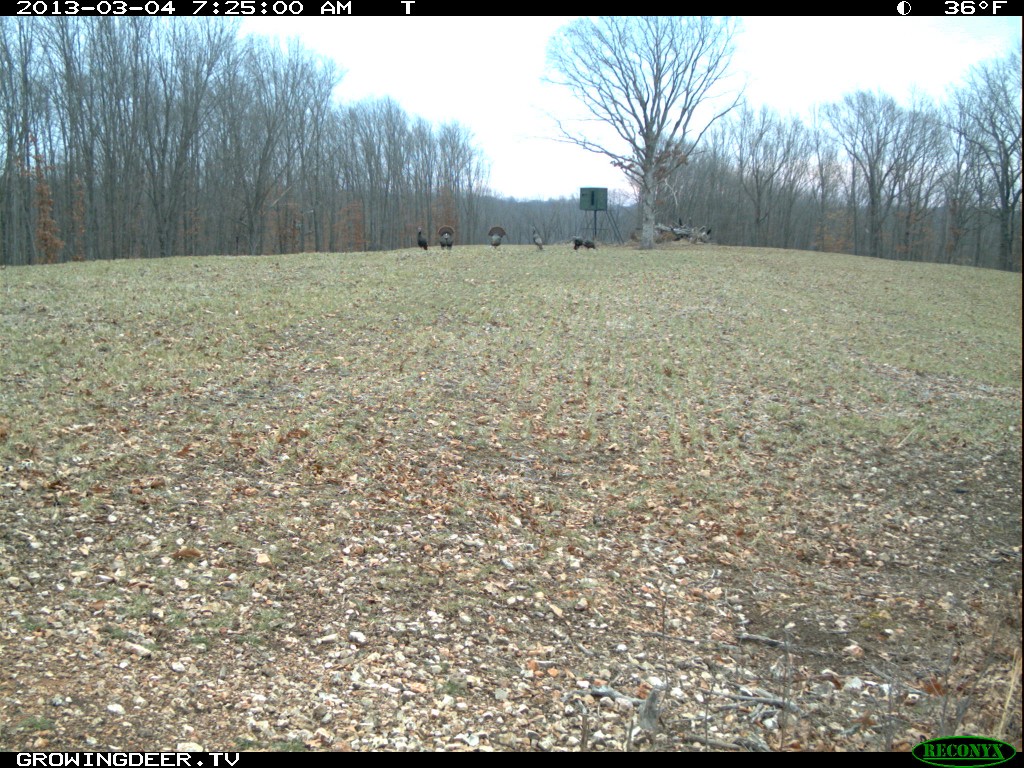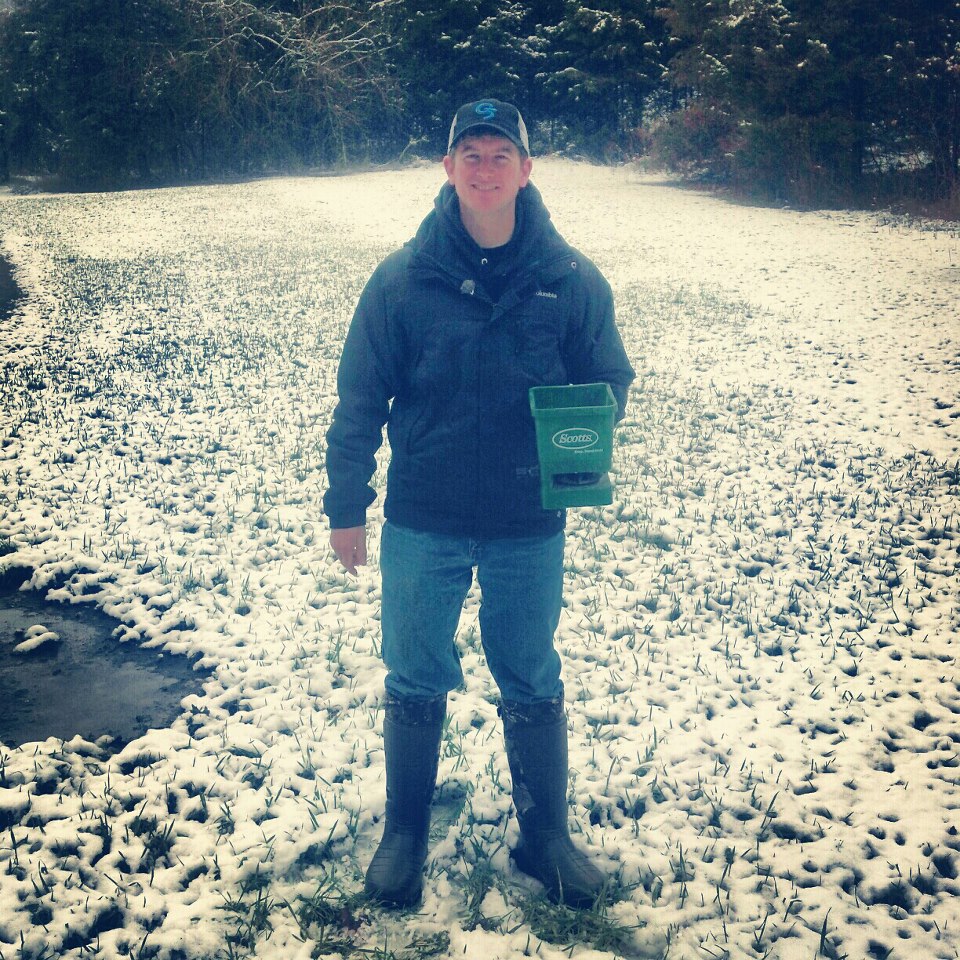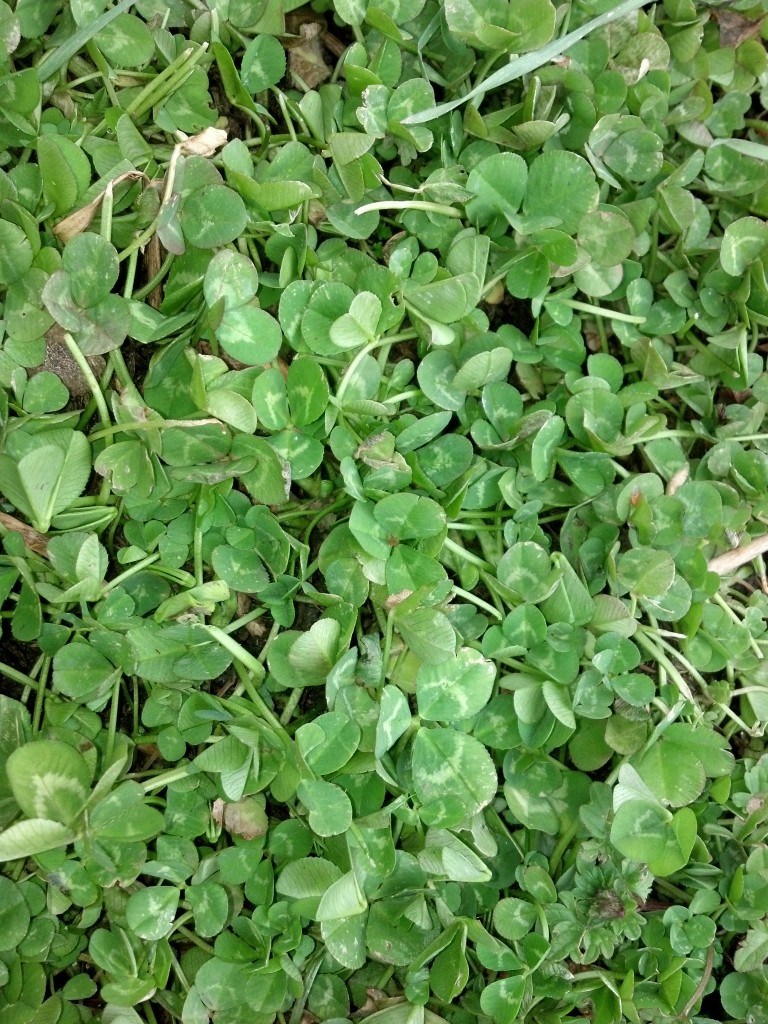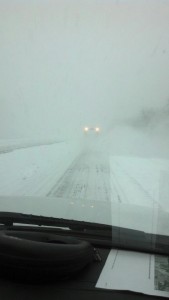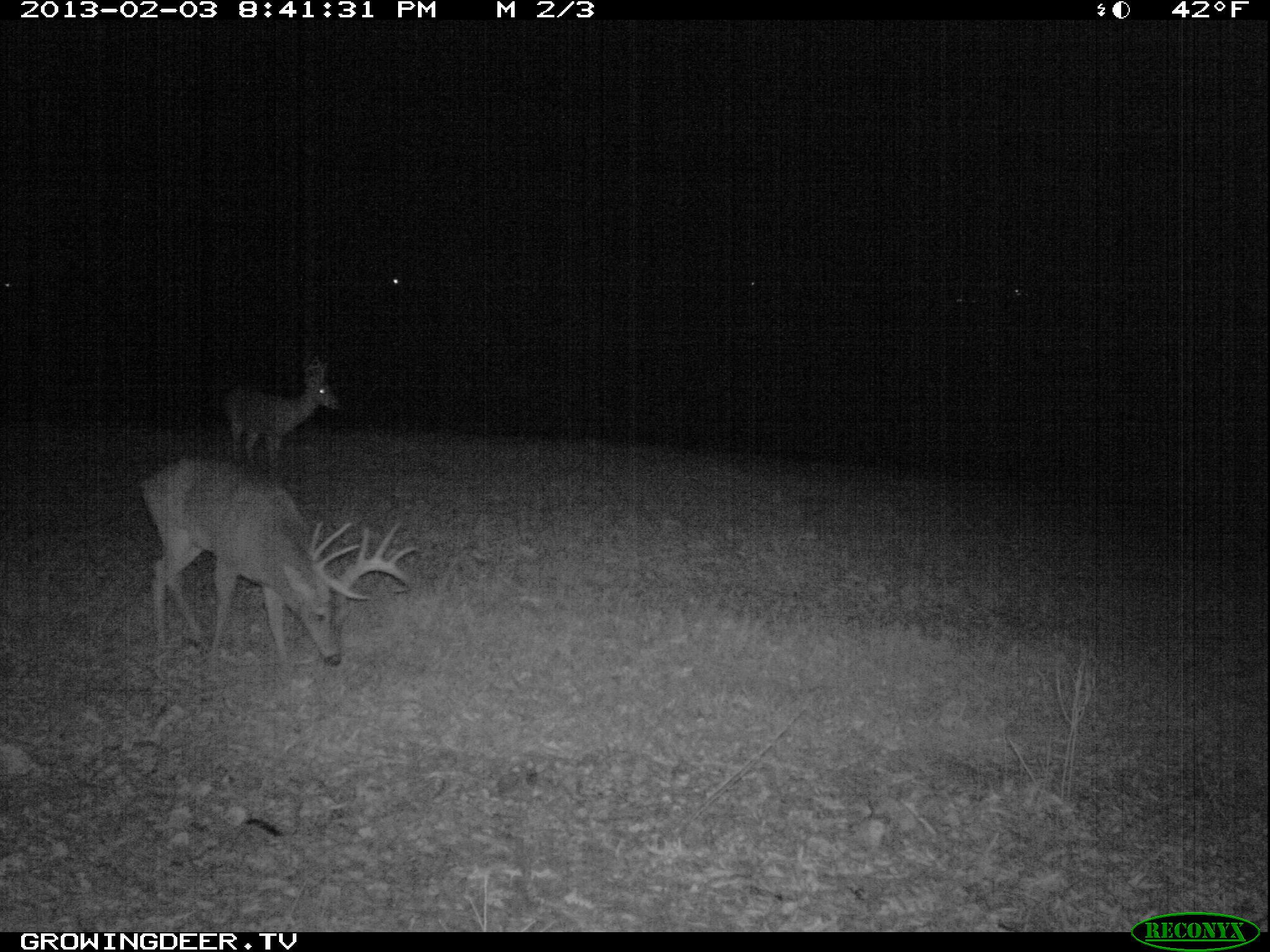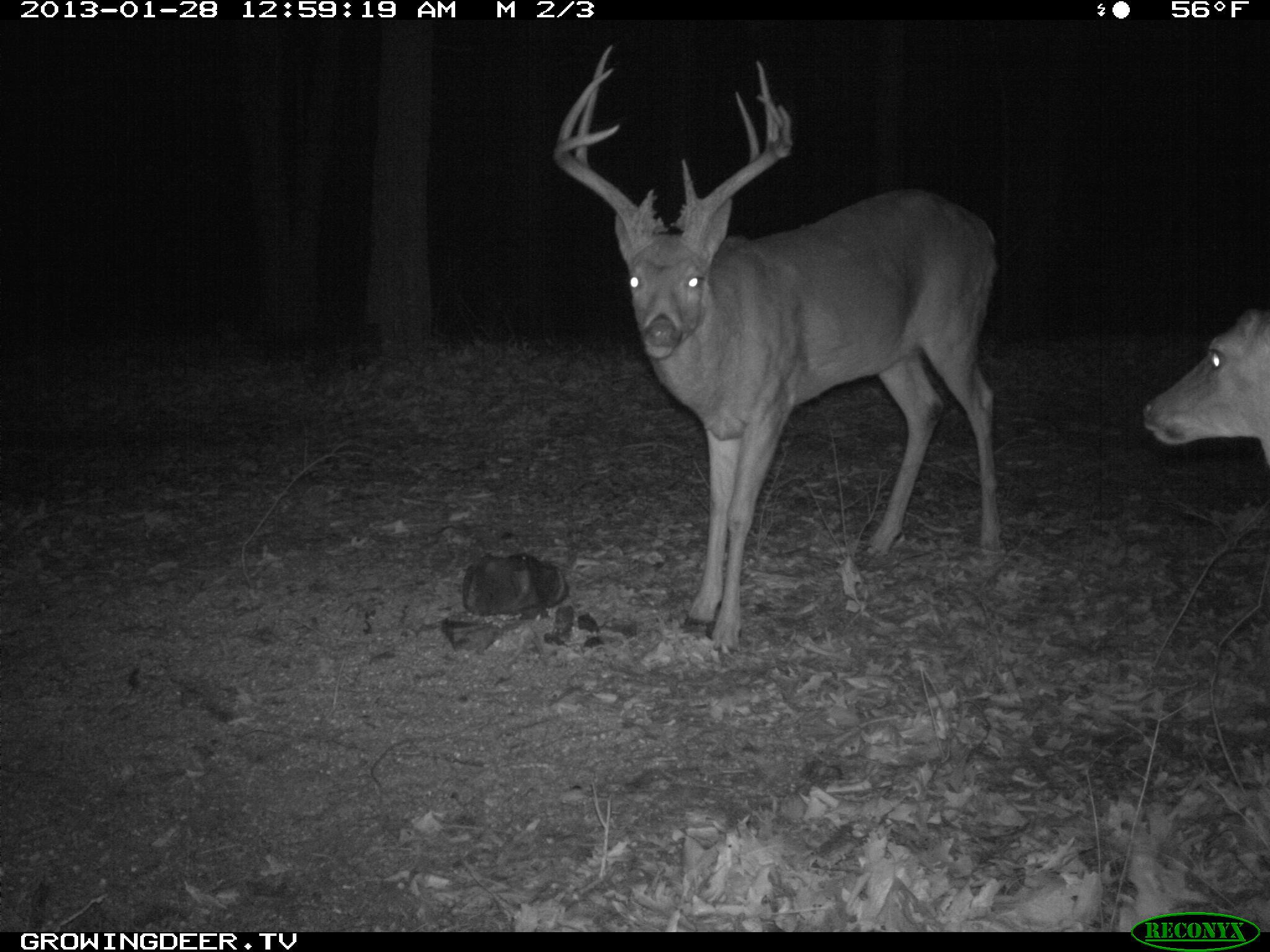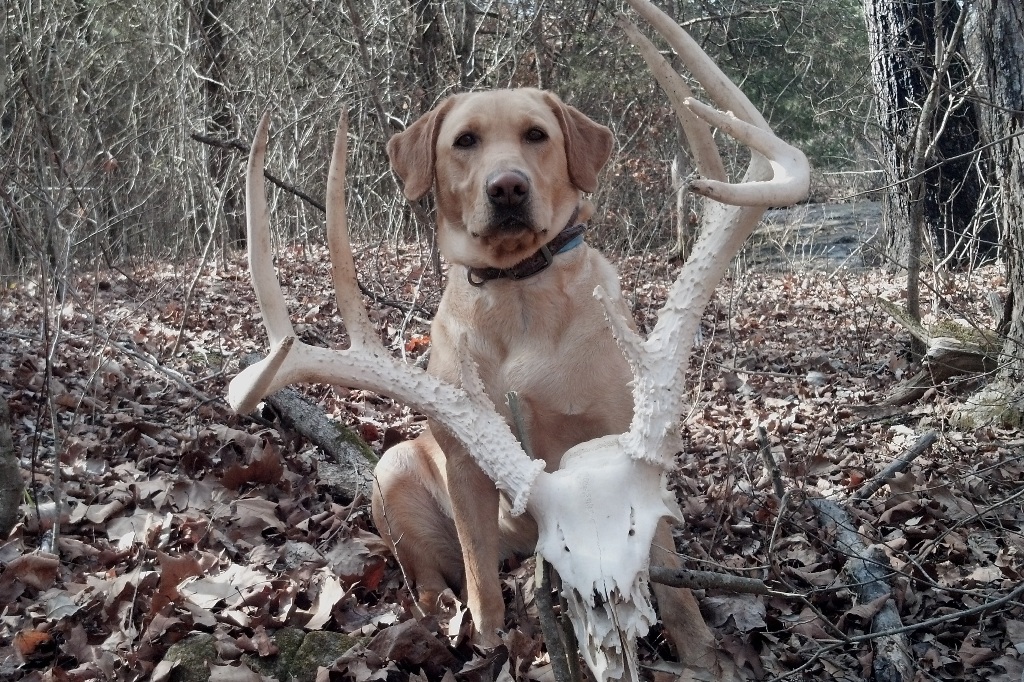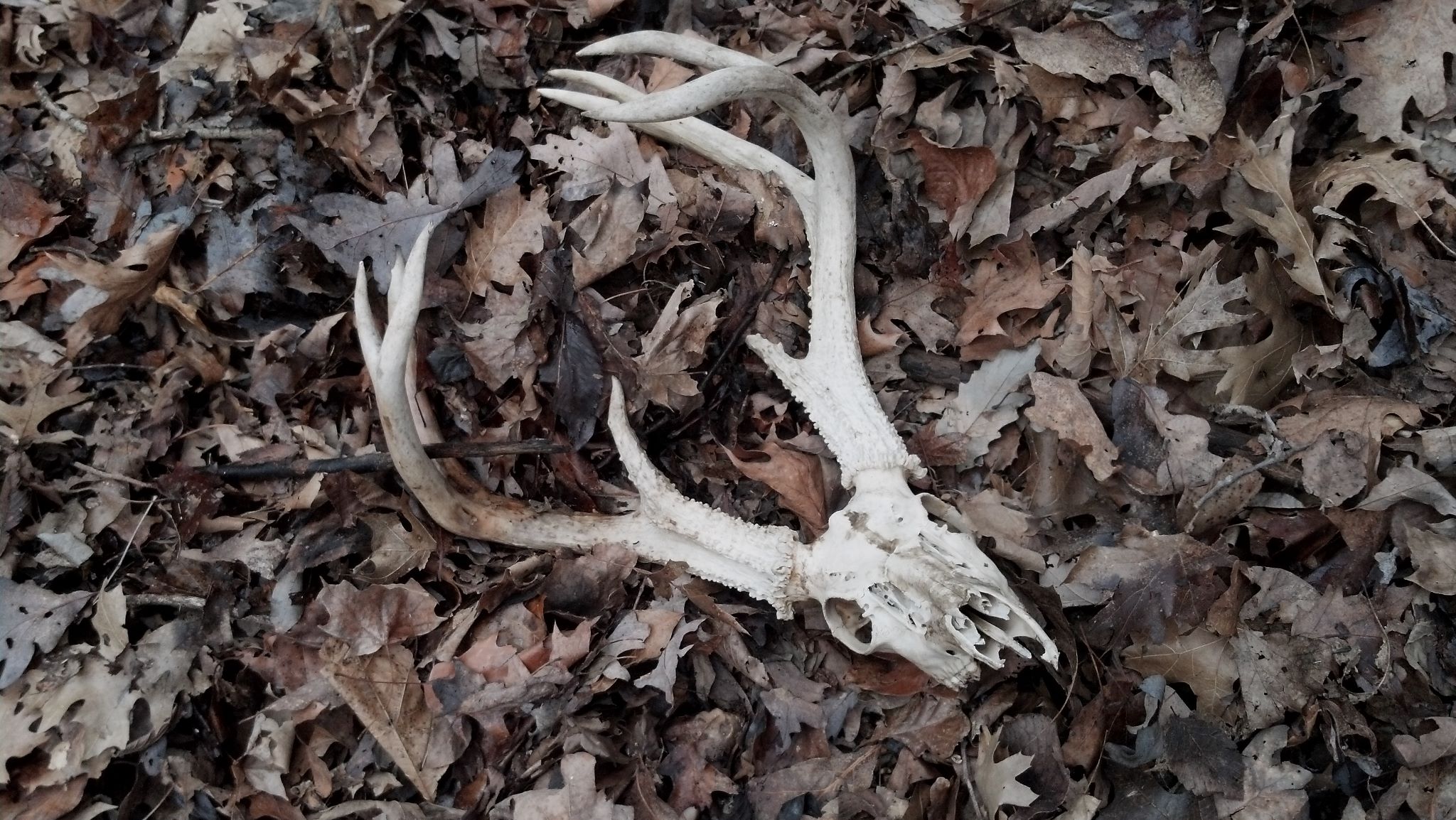Category: Hunting Blog
Turkey Hunting Or Planting Food Plots: Let The Weather Decide
In most states April is the beginning of turkey hunting and warm season food plot planting season! Both of these activities are very dependent on the weather!
Research has shown that more turkeys are likely to gobble when it’s a warm sunny day. Overcast, rainy, or snowing conditions tend to result in fewer turkeys gobbling. It’s tougher to hear turkeys gobbling on windy days.
I’d like to hunt every day, but I have tasks that must be completed so I can hunt. So, I try to schedule the days I get to hunt on the days the weather conditions are the most favorable. I’m not aware of any accurate long-term weather forecast (if you are please let me know). The most reliable forecast I’ve found that doesn’t include any advertisements or hype is from the National Weather Service’s Climate Prediction Center. I often check their website and look at the cool maps on the 3-7, 6-10, and 8-14 day forecast.
Last week I used these forecasts to change the days of a scheduled turkey hunting trip to Nebraska. I avoided a couple of windy/snowy days and arrived two days later to sunny 50+ degree weather! The turkeys responded well and I was able to tag a 28 pound tom with my Prime bow!
I’m also very interested in the soil temperature this time of year. My clients and I plant corn when the soil temperature is about 50 degrees and soybeans when it’s about 60 degrees. I use a soil thermometer at my place but use data collected daily by universities in many states when helping others determine when to plant. For example, the soils are still a bit cold to plant in Iowa based on data Iowa State University publishes daily on the web.
We are preparing to plant soybeans for wildlife at one of my projects on the North Carolina coast. Even though I’m in Missouri, I can check the soil temperature and help the guys onsite determine when to plant by checking the North Carolina State University website.
Weather has a huge influence on deer and turkey activity and the success of food plot crops. Check out the sources above before planning your next hunting or habitat management activity!
Growing Deer (and turkeys) together,
Grant
Best Food Plot Crops
I receive a lot of questions like this one from Kyle…
Once again it is spring and I am eager to make it up north to my proving grounds to start my spring and summer habitat projects. I have been fall planting a brassica mix for a couple of years and love the success I have had with it. I even got my first buck with a bow two years ago. This past year I got my second buck, a true dandy 5 year old 8 point. I have more land I want to plant this year. Are the brand name seeds more attractive or better to plant than the clover, wheat or brassicas I buy at the local feed mill? Is there a difference other than a huge mark up on price? A lot of companies say they specially design their product for deer. Is that a marketing gimmick or is there a benefit?
Unfortunately there’s not a simple “yes” or “no” answer to Kyle’s question. I’m sure some food plot companies do create fancy names for their food plot seed products and hike up the price. Others offer quality seed varieties that are more drought resistant, cold tolerant, etc.
One way to check is to read the seed labels. By law, all seed products must be labeled with the varieties and germination rates. If the variety is called something like “big buck turnips” then it’s probably more marketing than value. Another term commonly on food plot seed product labels is VNS – which stands for Varity Not Specified. It’s a good sign that there may be more marketing than value to a product when the bag is beautiful but the label states it’s composed of VNS seeds.
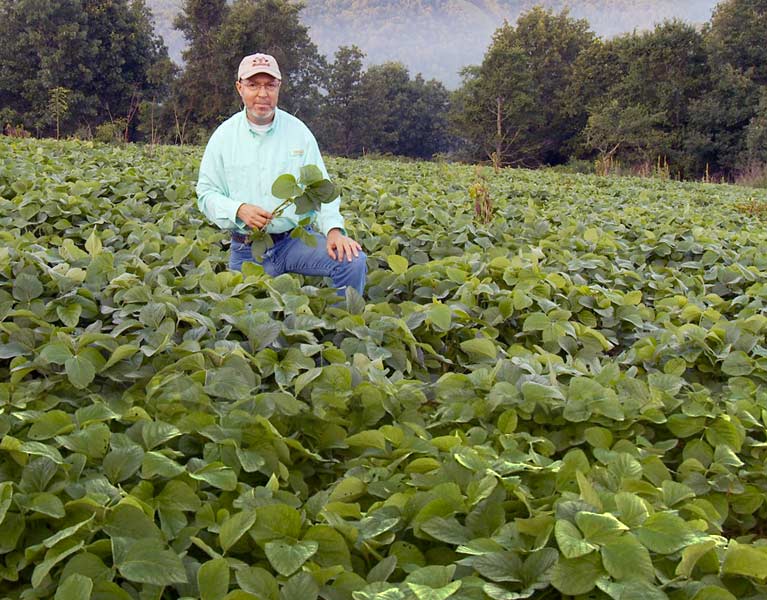
I plant the majority of my food plot acres in crops I have tried before. Eagle Seed has actively selected traits such as maximum forage and bean production, drought resistance, browse tolerance, etc.
I like to experiment with forage varieties that are new to me (but not necessarily new). I usually dedicate a small percentage of my food plot acres to such tests to see what works best on my land. However, the majority of my food plot acres will be planted with a variety/crop that I have tried before or that has been researched by a trusted university.
To my knowledge, no forage variety that’s marketed for deer has been tested by more universities that Eagle Seed forage soybeans. Eagle Seed is a family owned company that’s literally been breeding and researching forage soybeans (not just production beans relabeled as forage soybeans) for more than 40 years. That’s why their forage soybeans often grow to six feet tall when planted in good conditions while normal production beans planted at the same site only grow three feet tall.
The family that owns Eagle Seed has actively selected traits such as maximum forage and bean production, drought resistance, browse tolerance, etc. Simply stated, they’ve been crossing soybean varieties and selecting for these traits for decades before most other food plot companies were in business.
So, I suggest you do what I do – carefully read the labels, do some research on Google, talk to other food plot farmers and then make the best choice for crops that meet your objectives and growing conditions.
Growing Deer together,
Grant
Turkey Hunting: Tips To Avoid Mid-Season Mishaps
He stood only 45 yards away in a small clearing where he had spent the entire morning strutting and gobbling. Shooting hours for the day were coming to a close and I knew the time was now or never. I let out a soft yelp and as he raised his head I squeezed the trigger.
“Larry Long Spurs” was my arch nemesis during the 2005 and 2006 spring season and I hunted him almost every chance I could get. He didn’t always roost on our farm, and he wouldn’t gobble every morning, but on this particular hunt I had been lucky enough to roost him the night before. I was waiting for him the next morning when I heard his first gobble ring out breaking the morning silence. Being a novice turkey hunter in those days I made a few mistakes that I paid dearly for. The first mistake was my original setup. I had setup too far back and had to use the entire morning to crawl within range.
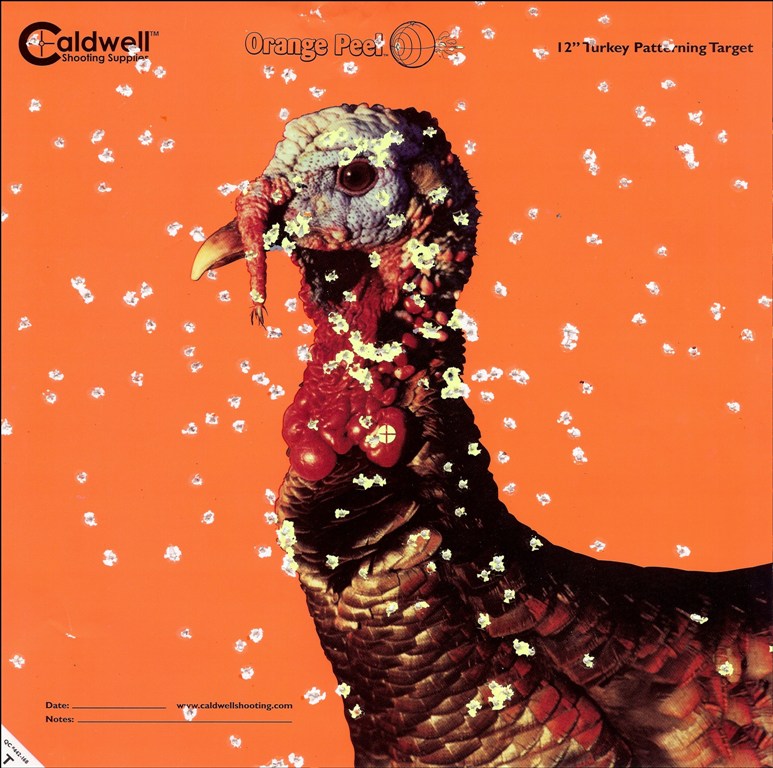
I use the Caldwell Stable Table and Lead Sled to pattern my shogun in preparation for the upcoming turkey season
The second mistake, a mistake that to this day upsets me; I didn’t test my gear before heading into the woods. In those days I weighed 120 pounds soaking wet but I wouldn’t allow anyone, especially my friends, to think I was too small for a 3 ½” turkey load. I was a little man with way too much gun power, so there was nothing pleasant about shooting my turkey gun at anything other than turkeys! That is where I went wrong. I let the fear of getting kicked by the gun prevent me from patterning my gun. I had found a cheap box of shells in a catalog and bought them to use on turkeys. When I hit the woods to hunt a turkey I wanted more than any other bird before, I had no idea how my shotgun patterned. BIG MISTAKE!
As turkeys scattered and I gathered myself from the initial shock of the gun blast, I jumped to my feet and ran to the opening where he had been standing. I found nothing: no Larry Long Spurs, no feathers, and no more faith in my shooting ability. I had blown the only chance I would get at him and all I could do was wonder what went wrong. Returning to our cabin I decided to shoot my shotgun and see what kind of pattern I was shooting. I can summarize my findings by saying that at 45 yards a beach ball would have had a good chance of survival.
Today, not a season goes by that I don’t take the time to pattern my shotgun. All fear of being kicked into submission is gone now that I use the Caldwell Stable Table and Lead Sled. No more are the days of leaning against a tree and hoping I could get the results I wanted before shooting more than a few times. Patterning my shotgun went from being a dreaded activity, to an enjoyable time in preparation of the upcoming season. Top that off with Winchester Double X turkey ammo and now I have complete faith in my gear every hunt.
It’s that time of year to get out and pattern those shotguns! Don’t make the same mistakes I did! Always remember to be safe and good luck turkey hunting!
Daydreaming of long spurs and long beards together,
Adam
Turkey Hunting: Scouting Made Easier
It’s March 14th and we’re almost a month away from Missouri turkey season! Most people who know me know that I am absolutely obsessed with spring turkey hunting! I love the months of March, April, and May for many reasons: the fishing is picking up, the woods are greening up, the morel mushrooms are popping out of the ground and most important the turkeys are doing their spring rituals! One of the biggest reasons I love chasing turkeys every year are the memories from past years that resurface every time I’m out there. My first turkey with my father (on what is now my favorite place in the world to chase turkeys), my first turkey taken when hunting and calling by myself, my four bearded turkey killed moments before getting completely soaked in a thunder storm and so many more. Reasons for having so many memories are due to the fact that I was turkey hunting with my dad years before I was a deer hunter.
Thinking back to the early days of turkey hunting, I can’t help but look at the amount of change that has occurred. Early in my career you went to locations where turkeys were known to roost and you waited to hear a gobbler then you made your move. It’s 2013 now, and although season is over a month away my scouting has already started, thanks to our Reconyx cameras. Yesterday we began setting our Reconyx cameras to time lapse. We do this so we can scout over fields where turkeys are likely to be active, but still out of range of our motion sensors. Common trail cameras without the time lapse feature would most likely miss an old tom that was strutting a hundred yards away in the field. We position our Reconyx cameras to overlook our food plots and then set the time lapse interval to every 15 minutes. Once this is done we now are scouting our food plots without even getting out of bed in the mornings.
With our Reconyx cameras set up with time lapse on our food plots we are officially scouting and preparing for the first day of turkey season. When that first day arrives we will hit the woods with complete confidence on where and when to go!
Turkey seasons are already open in some states and are soon to open in others. Always stay safe and best of luck to all!
Daydreaming of long beards and long spurs!
Adam
Late Winter Food Plots For Bigger Antlers this Spring!
I’m receiving lots of questions on Facebook about how, when, and what to plant in food plots this spring. Warm season food plots are a very important deer management tool unless there are lots of production soybeans grown on or next to your hunting property!
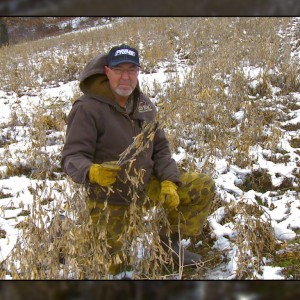
The bean pods produced by these Eagle Seed forage soybeans are providing quality food for the local deer herd.
However, deer are currently storing minerals and preparing for antler development! Throughout most of the whitetails range it’s still too cold to plant for spring food plots to be productive. Food that was produced during the last growing season such as commercial ag fields, etc., were likely harvested months ago. So deer in ag production areas often don’t get enough to eat during the time from when the soybeans and corn are harvested until the next crop is planted and germinated.
The trend is true in timber or non ag production areas. Deer in these areas often rely on food that was produced during the past growing season by native vegetation or food plots. Deer certainly survive in these areas with limited food available. However, I want deer to thrive and express most of their antler and fawn production potential – not just survive.
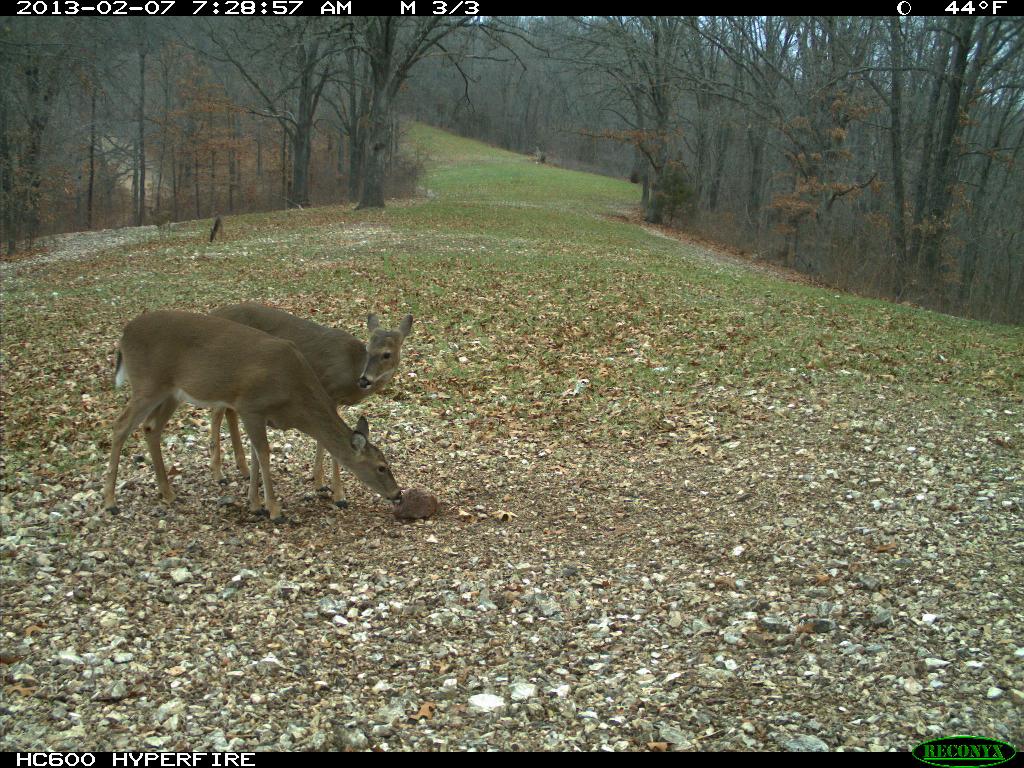
This doe and young buck are seeking trace minerals during the late winter. It’s important to keep a source of quality trace minerals out year round.
That’s one reason I plant forage soybeans and keep Trophy Rocks out this time of year. Eagle Seed forage soybeans produce tons of forage that is high in protein during the growing season and produce grain that deer consume during the winter (non growing season). Soybean grain is high in oil (fat) content as well as protein. This provides an excellent food source throughout the winter. Trophy Rocks include 60+ trace minerals – and trace minerals are necessary for deer to express their full potential.
Whether you hunt in ag production or timber country – consider what deer are eating from now until when the warm season crops germinate. This is a critical time for antler and fawn development!
Growing Deer together,
Grant
Frost Seeding Clover Food Plots: Easy Off Season Project
It’s March 1st and we’ve officially survived the month of February. Now we’re taking on March. This time of year can be very boring for a whitetail hunter. Cabin fever can be a deer hunter’s worst enemy if they haven’t started shed hunting or found some off season management projects to keep themselves occupied until turkey season. One of these management projects that we are currently doing here at The Proving Grounds is frost seeding clover. We’ve posted a few pictures of the team frost seeding on our Facebook and Twitter pages. After posting, we’ve had some questions about what frost seeding is.
Frost seeding is the technique of broadcasting a small hard seed onto the ground and using the natural act of frosting or the freezing and thawing of the ground to help pull the seed into the soil. This technique is usually practiced from mid-February to the beginning of March. This allows seeds, like clover, or other small hard seeds to lie in the soil until adequate warmth and moisture are available to germinate. This technique does not work well with large soft seeds like corn or soybeans because they can soak in moisture before it is warm enough to germinate and this causes them to rot and not grow, which can be costly.
When we’re frost seeding clover we tend to plant more seed per acre than we typically would in a fall or spring planting. Generally we plant 5 lbs/acre for a new stand of clover. When we’re frost seeding we will double that and plant 10lbs/acre. We do this because the seed may lie on the ground for weeks before germinating with the possibility of things like birds carrying some off or heavy rain washing seed away, so we want to have plenty of seed left for growing.
The additional seed cost is well worth it in the time savings for not having to employ more sophisticated equipment. A broadcast seeder is quick and inexpensive, making it a tool that everyone can use.
We are planting clover here at The Proving Grounds to help carry that void of growth in early spring. You’ve probably heard Grant talk about soybeans and how they provide forage eleven months out of the year. Clover can be that forage for the twelfth month. By providing enough clover along with Eagle Seed beans you can provide deer forage twelve months out of the year!
You can catch more information about frost seeding on the upcoming episode of GrowingDeer.tv (GDTV 171)!
As we head into March I hope you all can get out and cure your cabin fever with various management projects, combine it with a little shed hunting or maybe do a little scouting for turkeys!
Dreaming of Giant Whitetails,
Adam
Coyote Hunting Tips And Techniques
It’s Friday February 22nd and Grant and I just returned late last night from a coyote hunt in Hamilton, Illinois with Jason Gilbertson and Mike Stock from Winchester Ammunition. Along with their friend Tyler Sellens of Riverview Outfitters. As most of you are aware there was a large winter weather front sweeping across the Midwest on Wednesday and Thursday, so Grant and I headed up on Tuesday hoping to get a couple days of hunting coyotes in before the winter weather hit.
With the threat of wintry weather Grant and I thought it would be a great time to catch some predators trying to find a quick meal before the storm hit. Plus, we would also spend some time with our friends at Winchester Ammo doing something exciting like chasing coyotes! On Wednesday Grant was busy working on a property near Princeton, Illinois so I teamed up with Mike and Tyler for the day. We had a fun day chasing coyotes. At the end of the day Mike headed home just as Jason and Grant arrived to hunt the following day. Before I give away the outcome of our success, you can catch this two day coyote hunt on the upcoming episode of GrowingDeer.tv (GDTV 171)! During this hunt I noticed some different techniques that I’ll share with you now.
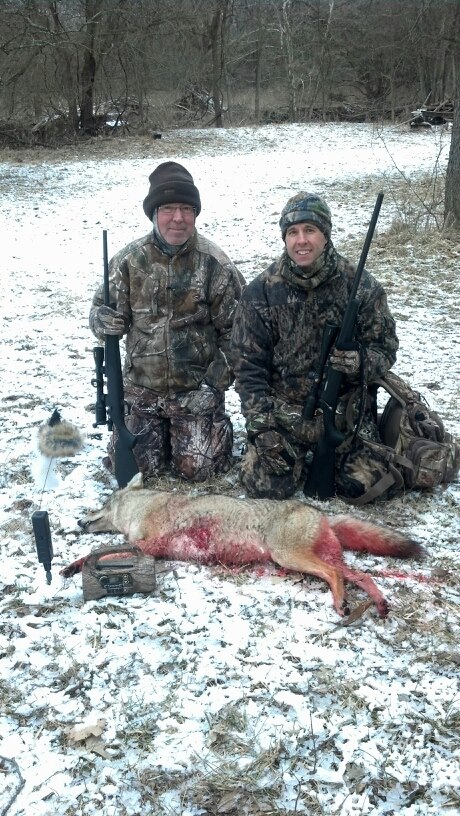
Using these techniques could ultimately lead to a successful predator hunt.
- Approach. You often hear Grant talk about MDE (minimal disturbance entry) for deer hunting, this is also important to coyotes. Our most successful trips happen when we use a hill or slope to our advantage. Approaching from a backside of a hill and just breaking over the top so we’re not alerting anything when approaching is a great way to sneak attack coyotes!
- Crosswinds. Of course when deer hunting, a wind that is consistently in your face is ideal, but sometimes with coyotes they can hang up out of sight because the situation is too risky for them. We typically want our wind direction to be blowing across a field or open area so when a coyote does approach downwind he’s in sight and you can take the shot!
- Be ready! A lot of times coyotes can run into your setup in under a minute of turning on the caller. This happened numerous times during our Illinois hunt. Once the caller had only been on for 36 seconds! With that being said, when the caller is turned on be ready!
- Timing. Coyote breeding season here in Missouri is typically mid to late February so its prime time to call coyotes. Coyotes are very vocal during this time so don’t be afraid to make a few howls either, it might be the only temptation you need to bring one within range.
It’s a slow time of year for deer hunters but an exciting time of year for predator hunters! It’s a great way to ease your cabin fever during these slow months between deer and turkey seasons.
That winter storm swept cross Missouri it dumping everything from freezing rain, sleet, to snow in northern parts of Missouri. Reports of up to 17 inches in places, but in Branson, Missouri there was primarily just sleet and freezing rain. Conditions were very hazardous when we made our venture home; generally it’s a 6 hour drive from Keokuk, Iowa where we were staying to Branson. Last night it took just over 12 hours. Today we are thankful for making it home safely with memories stored away of exciting and challenging days hunting those wiley coyotes!
As always – stay safe and good luck removing predators!
Dreaming of Giant Whitetails,
Adam
Scouting Whitetails In February for November Success
If you’ve paid any attention over the past couple of weeks you’ve seen our GrowingDeer.tv episodes, tweets and Facebook posts have consisted mostly of bucks that have been found dead on The Proving Grounds due to the outbreak of EHD late last summer. Now if you’re anything like me you might be getting sick of talking about deer that you’ll never be able to hunt. So today we’re changing things up and thinking “happy thoughts.”
There are still a few nice bucks running around here, one that you’ve probably heard us talk about before is a 6.5 year old or older buck named Split Brow. Another great buck that showed up on Boomerang Ridge this year is Two Face. Both of these bucks were still holding their antlers in early
February when we ran our Reconyx cameras, but it’s that time of year when they can fall off at any moment, so we’re taking any spare moments we get to do a little shed hunting!
One of the great things about shed hunting, besides finding those treasured antlers, is finding the trails, scrapes, rubs, and all the other sign that you didn’t know existed because they were in areas you didn’t want to intrude on during hunting season. That’s the great thing about walking your property during January and February, all the deer sign that was left during hunting season is still present. This means you might be able to find those trails that the mature bucks were using to sneak through your property unseen. With this in mind, anyone who’s ever shed hunted with me knows I’m terrible at it! I have to almost step on the antlers to find them. The biggest reason why I’m so bad at shed hunting is the deer sign I mentioned. When I’m walking through the woods and find a very active deer trail, then maybe a large rub on a tree, followed by a scrape, I’ve stopped focusing on finding sheds and I’ve already started looking for a tree to hang a Muddy treestand in.
While collecting soil samples and shed hunting last week, if I noticed a large deer trail coming into a food plot, I would take a short recon mission and see what I could learn. As the week came to a close I had found nine new locations to hang Muddy stands in. Nine new stands in places we didn’t hunt at all last year, plus they’re loaded with deer sign! Needless to say we are only a few weeks into February and I’m already excited about the upcoming season!
It’s a great time of year for shed hunting but don’t forget to keep those eyes peeled for possible hunting locations. You could be missing out on that secret spot where your Hit List bucks hide!
Dreaming of Giant Whitetails,
Adam
Shed Hunting: Finding Antlers The Hard Way
In my last blog post I outlined my initial plan for shed hunting our property, The Proving Grounds. My initial focus was to resist the call of the easy food plots and the lure of the open hardwoods and search along all the creeks and water sources for deer that succumbed to EHD this past summer.
I have to tell you that looking for the skulls of deer is not as joyful as hunting for the thrown shed antlers. Seeing the antler sticking up is a real rush that quickly is tainted with sadness when you see that it is attached to the skull plate.
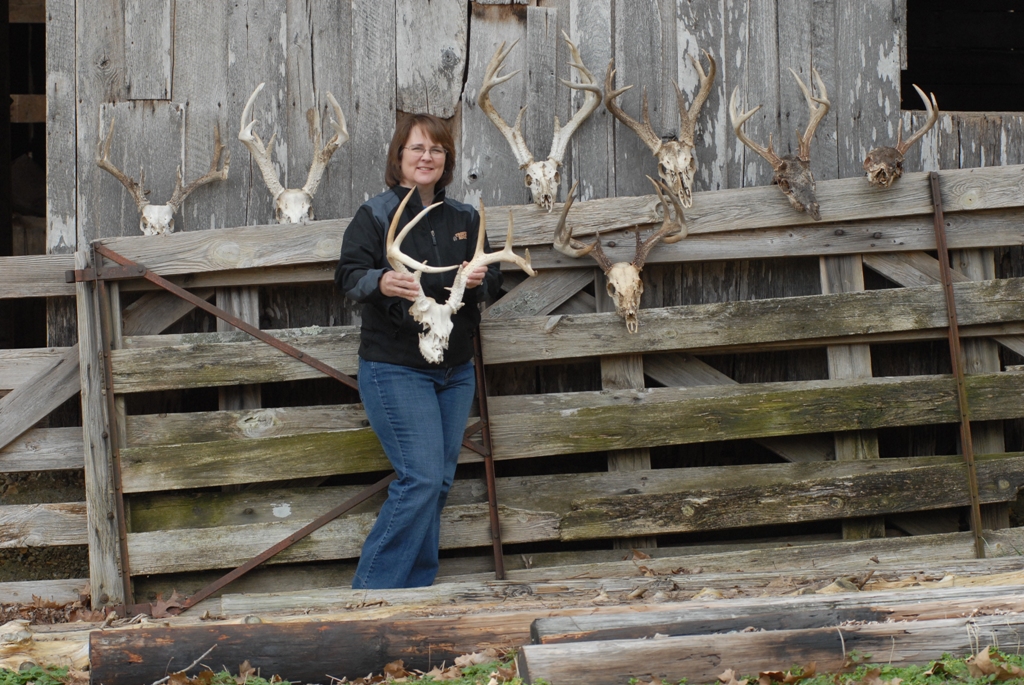
Over the last three weeks we have found seven bucks that died seeking water as EHD drove them to water sources.
The first buck Crystal (my shed hunting Labrador) and I found along the creek bank is one that we called Clover Mountain 10. Upon finding that buck I made my usual call to Grant to let him know I had found an intact set of horns. I felt like I was calling to tell him that one of our friends had died. As I waited for him to join me to evaluate the buck the usual joy from finding a big shed antler was missing.
Over the last three weeks we have found seven bucks that died seeking water as the disease drove them to water sources. These bucks included: Clover Mountain 10, Bean Flipper, 8 Ball, and Last Lick Lefty. In addition to these bucks AJ, our current wildlife student, found a fifth buck – Cave Stickers. Each buck had been appearing on the Reconyx trail cameras over the summer with Adam noting the last known sighting of the bucks. He had hopes that they had simply been avoiding the cameras by spending more time in a different part of their range. With each buck those hopes were dashed along with the anticipation of having one less mature buck to hunt this fall.
Finding the remains of the deer that passed this summer due to EHD is not an easy task (Watch GDTV 142 for more info) They’ve been lying around the creek bottoms long enough for scavengers to eat and spread the bones. Leaves have fallen and covered up the skeletal remains. The bucks get all the glory of being shared on facebook posts and here on the blog while the various scattered bones go undocumented. We have had very little heavy rain to clear the leaves until just this last week. That rain helped to uncover the remains of two of the bucks we found as they were lodged in snags/log jams in the creek.
I have to give Crystal some credit for assisting with the finds. One of the keys to shed hunting with a dog is to know your dog and watch their body language. Although Crystal doesn’t like to retrieve a skull with antlers attached (I believe this is because in her early training I had her retrieve an intact skull/antlers and she hurt herself), she does go to them and stand over the remains which makes me follow to see what she has found.
In the next weeks, we’ll share more of our shed hunting adventures and explain why the antlers on the bucks that died in velvet look and feel different from cast antlers. In the meantime – share your shed hunting success stories and photos with us on our facebook page.
May God bless you with some special shed hunting!
Enjoying Deer together,
Tracy
Shed Antler Hunting: The Aftermath of EHD
It’s been a busy week here at The Proving Grounds. Missouri trapping season is coming to a close and we’re also in the middle of our post season camera survey. These days are usually busy for the GrowingDeer.tv Team as we check our Duke Traps every morning and replenish the Record Rack feeding stations. It was during this time when I received a phone call from Mrs. Tracy saying she had found a “sure enough big buck.”
As many of our loyal viewers know, Mrs. Tracy loves to shed hunt with her dog, Crystal. Grant, Brian, and I are leaving January worn down from the long haul of deer season but Mrs. Tracy is just getting fired up! With the close of archery season on January 15th Mrs. Tracy heads to the woods to start looking for sheds and skulls of the bucks who didn’t survive the season. Especially after this year, with the outbreak of EHD (Epizootic Hemorrhagic Disease), as the shed hunting enthusiasts start their search for those treasured antlers, they will have their hands full of EHD stricken deer remains. There are a couple reasons why I feel this will happen.
We are beginning to switch out of hunting and back into the management side of things. We are starting to enter into parts of the property that have been left untouched during the hunting season. As we’ve started doing these projects we have been finding carcasses, both recent and from months ago when EHD hit the hardest. For example, Monday we began collecting soil samples and in a few hours of work we had already found two carcasses by the creek we were working by.
As the season progressed here at The Proving Grounds we noticed that some of our bucks had come up missing. First there was Bean Flipper in late August, then Tightwad in mid-September, next Giant 8 in late September and finally Pumpkin face (after a firsthand encounter in early November). Typically bucks are not as easy to pattern during the rut but as we enter a late season feeding pattern we would expect to see them on our Reconyx cameras. We’re now almost into February and still haven’t seen “hide nor hair” from these bucks, until I got the phone call.
I could hear the excitement in her voice and I was just hoping she couldn’t hear the disappointment in mine. She had found a large buck dead and now my only thought was, “Who is it?” She sent a picture to my phone and based on what looked like split G2s my instincts told me it was Bean Flipper. After we hiked down the valley to her and the buck, I put my hands on the antlers and crossed Bean Flipper of the MIA list. You can catch the entire recovery on next Monday’s episode at GrowingDeer.tv (GDTV 167).
As we make our way into the post season/shed hunting time of year, the GrowingDeer.tv Team will start focusing on who survived and who still remains MIA, and we’ll bring it all to you right here semi-live!
Good luck to all of you planning on hitting the woods searching for sheds!
Dreaming of Giant Whitetails,
Adam



